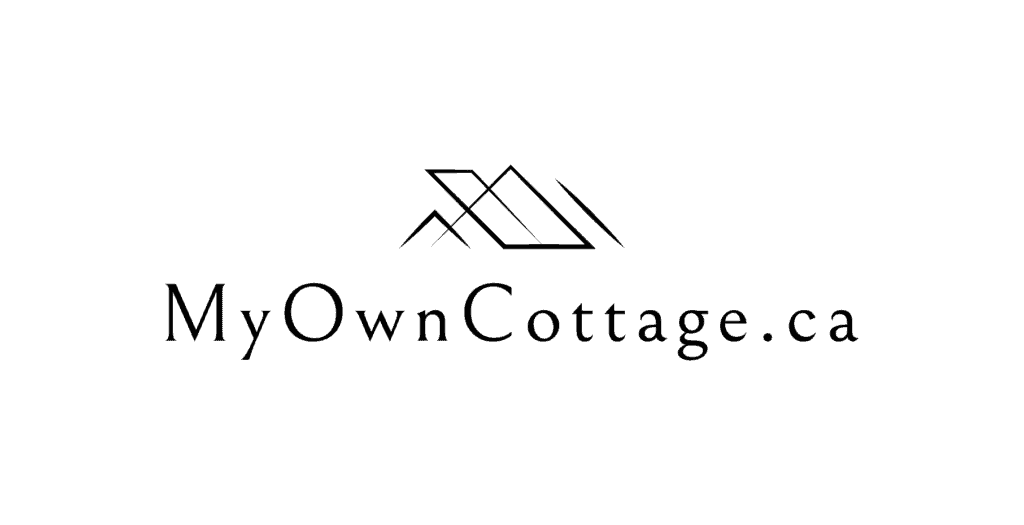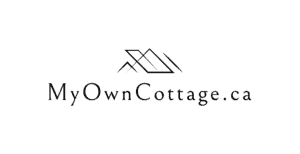Eco-friendly and sustainable Oshawa prefab homes are designed to minimize environmental impact through energy-efficient systems, recycled materials, and smart construction practices.
Maintaining Prefab Homes in Oshawa
Learn all about maintaining prefab homes in Oshawa with practical tips on upkeep, repairs, and seasonal care.
Keep your home in top shape for years to come.
Home » Maintaining Prefab Homes in Oshawa
How to Maintain Your Prefab Home in Oshawa
Prefab and modular homes have become increasingly popular in Oshawa, ON and across the Durham Region.
These unique homes are offering an innovative, cost-effective solution to the growing demand for affordable housing.
From cozy tiny homes to expansive multi-story projects, modular construction offers flexibility, speed, and sustainability.
Upkeep Tips for Prefab Homes in Oshawa
However, like any property, maintaining prefab homes in Oshawa is essential to protect your investment and ensure long-term comfort.
Whether you live in a new home, a prefab cottage, or part of a modular housing project, regular maintenance tailored to the region’s climate is key.
A Maintenance Checklist for Oshawa’s Climate
Oshawa experiences four distinct seasons, each with its own set of weather-related challenges.
A proactive maintenance approach can prevent damage and costly repairs.
This will help in keeping your prefab home efficient and comfortable all year round.
🌸 Spring Seasonal Maintenance
Spring is the ideal time to assess your home for any damage sustained during winter.
Inspect the roof for loose shingles or wear, clean the gutters to prevent water buildup, and reseal any cracked caulking around windows and doors.
This season is also great for checking your siding and foundation for early signs of wear.
☀️ Summer Seasonal Maintenance
In summer, prioritize your HVAC system to ensure it’s working efficiently during the hotter months.
Clean or replace filters and consider having a technician inspect your system.
Summer is also the right time to trim trees, inspect decks and porches, and evaluate the landscaping.
This will help you to ensure proper drainage away from your permanent site foundation.
🍂 Fall Seasonal Maintenance
Fall is all about preparation.
Clear leaves from gutters and downspouts again, inspect the roof for any potential snow-load issues, and reseal windows and doors to prevent drafts.
In Durham Region, winters can be harsh, so this step is vital in preventing frost damage.
❄️ Winter Seasonal Maintenance
During winter, monitor snow accumulation on your roof and ensure that your pipes are insulated.
The temporary nature of some transitional housing suites might require even more diligent checks for heat retention and pipe integrity.
If you’re in one of Oshawa’s modular homes or tiny homes, proper insulation with winter readiness can help avoid costly emergency repairs.
Below, we go into greater detail on the crucial aspects of winter seasonal maintenance for prefab homes in Oshawa.
Winterizing Your Prefab Home in Oshawa
Oshawa’s winters can be tough, with freezing temperatures, heavy snowfall, and icy conditions.
Prefab homes—like all homes—require proper winterization to maintain comfort, reduce energy costs, and prevent long-term damage.
Here’s a practical guide to winter-proofing your prefab home and protecting your investment.
1. Seal Doors and Windows
Prefab homes often come with high-efficiency windows, but over time, seals can wear out.
Check all windows and exterior doors for drafts and reseal them using weatherstripping or caulking.
Even a small gap can let in cold air and drive up heating costs.
📌Pro tip: Hold a lit candle near window edges—if the flame flickers, you’ve found a draft.
2. Inspect and Insulate Pipes
Frozen pipes are one of the most common and costly winter home issues.
Prefab homes can be more susceptible if built on piers or with crawl spaces.
Wrap exposed pipes in foam or fiberglass pipe insulation.
Use heat tape for added protection in extremely cold areas.
Don’t forget outdoor spigots—shut off water lines and drain them completely.
3. Check Roof and Gutters
Heavy snow and ice buildup can damage your roof or cause ice dams.
Inspect the roof for missing or damaged shingles.
Clean out gutters and downspouts to prevent clogs that cause ice backup.
Consider installing gutter guards or heating cables if you’ve had issues before.
4. Upgrade Insulation Where Needed
While most prefab homes meet modern energy standards, insulation in areas like the attic or crawl space may need reinforcement—especially if your home is older.
Add blown-in insulation to attics.
Check for cold floors—this could indicate poor insulation under the subfloor.
5. Service Your Heating System
Don’t wait until the first snowstorm to realize your furnace isn’t working properly.
Schedule a professional inspection before winter starts.
Replace filters to improve efficiency and air quality.
Consider installing a smart thermostat to better manage heating costs.
6. Protect the Exterior
Wind, ice, and snow can all wear down your home’s siding, foundation, and fixtures.
Store or cover outdoor furniture.
Trim overhanging branches that could snap under snow weight.
Inspect siding and skirting for damage or gaps where pests could enter seeking warmth.
7. Emergency Supplies & Backup Plan
Winter storms can knock out power or trap you indoors.
Keep flashlights, batteries, bottled water, and non-perishable food on hand.
Invest in a backup generator—especially if you rely on electric heat.
Preventing Weather-Related Damage
The cold months in Eastern Ontario pose a specific threat to homes of all types.
However, prefab homes—especially those with exposed skirting or less foundation depth—can be vulnerable to frost damage.
Insulating crawl spaces and checking for drafts near flooring or baseboards is critical.
Sealing Windows is Highly Effective
Sealing windows is another often-overlooked but highly effective way to maintain internal temperatures.
Even newer residential units can benefit from updated weather stripping and caulking, which also helps reduce energy bills and increase comfort.
Seasonal HVAC maintenance also contributes to better indoor air quality, which directly affects mental health.
This is especially the case during long winter months when indoor living dominates daily life.
Prefab Materials vs. Traditional Stick-Built Homes
However, one common question among homeowners is how the lifespan of prefab materials compares to that of traditionally built homes.
Thanks to advancements in modular construction, today’s prefab homes are built with high-quality, durable materials in a controlled factory environment.
This process minimizes the impact of weather delays and material degradation during construction.
Unlike Traditional Methods in Construction
Unlike traditional methods, where materials are exposed to the elements during the build, prefab components are precision-engineered to withstand transport and assembly stress.
Leading companies like My Own Cottage ensure that their builds meet or exceed national building codes.
This is significantly contributing to longevity and performance comparable to site-built homes in Vaughan, ON, Mississauga, ON, and Toronto, ON.
The Quality of Installation and Upkeep
Depending on the quality of installation and upkeep, prefab homes can last as long as, or even longer than, traditional homes.
A well-maintained modular home, whether it’s 800 or 2,000 square feet (SQ. FT), can easily provide comfortable living for decades.
Modern interior design for prefab homes in Oshawa focuses on maximizing space, incorporating modern aesthetics, and creating functional layouts.
Warranty Coverage and Service Plans
Prefab home builders in Oshawa specialize in delivering high-quality, customizable homes with efficient construction timelines and modern design options.
Moreover, most prefab home manufacturers offer comprehensive warranty coverage, typically spanning structural components, roofing, plumbing, and electrical systems.
These warranties are especially helpful in the early years of ownership, ensuring any factory-related defects are addressed at no cost to the homeowner.
New Home Service Plans
Homeowners should also consider enrolling in optional service plans to extend coverage or secure annual inspections.
These plans can be particularly valuable for new home buyers or those with specific needs, such as accessibility modifications or additional home office spaces.
Working with a professional team ensures that your home remains in top shape and aligned with evolving energy standards or lifestyle changes.
Maintenance Housing Programs
In regions like London, ON and St Catharines, similar housing programs have shown that early and consistent maintenance reduces long-term costs and preserves home value.
The same applies in Oshawa, Ontario, where weather and wear can quickly impact structural integrity if left unchecked.
Local Tools, Agencies, and Resources
Homeowners in Oshawa have access to a variety of local support systems.
Local agencies and housing advocacy organizations often provide resources for routine upkeep and emergency repairs.
This is particularly useful for individuals residing in transitional housing suites or temporary housing units.
Help is Available to Maintain Comfortable Environments
The Durham Region continues to address chronic homelessness and housing affordability.
This is being accomplished through partnerships with city planners, developers, and community groups.
Whether you’re living in a modular housing project, a new listing, or a government-supported unit on Charters Road.
Help is available to maintain safe and comfortable environments for all residents.
Financial Assistance for Critical Repairs or Upgrades
Some programs even offer financial assistance for critical repairs or upgrades, especially in cases where poor maintenance might risk the structural or health integrity of the building.
These supports are not limited to Oshawa—other cities like Ottawa, ON, Dawson Creek, BC, and Quinte West offer similar services in response to increasing demand for affordable housing.
Virtual Support and Social Tools
Today, homeowners don’t have to rely solely on in-person services.
Many companies now offer virtual tours of home maintenance features, interactive guides, and even customer service through social media.
Whether you’re looking for the best caulking solution for your windows or tips on upgrading your HVAC filter, the answers may be just a click away.
A Variety of Home Improvement Tools
Online platforms also host a variety of home improvement tools, including access to vetted contractors and local repair services.
Some resources even help homeowners plan their space or find compatible upgrades.
Essential Maintenance for Oshawa Prefab Homes
Maintaining prefab homes in Oshawa requires a thoughtful, seasonal approach that addresses the unique challenges posed by the local climate and construction style.
The right combination of annual inspections, weatherproofing, professional service, and community support is crucial.
With these tools, your prefab or modular home can remain as durable and inviting as any traditionally built home.
Keeping Your Prefab Home in Oshawa in Great Condition
Whether you’re living in a tiny home, a new listing, or part of a larger modular housing project.
Regular care helps protect your investment and ensures a healthy, safe, and happy living environment.
By staying proactive, leveraging local programs, and working with a professional team, you’ll ensure that your prefab home in Oshawa continues to be the home of your dreams for years to come.
Ready to Maintain or Upgrade Your Prefab Home?
At My Own Cottage, we’re here to help you protect and personalize your prefab home in Oshawa and beyond.
Whether you’re exploring routine maintenance, planning upgrades, or just getting started on your prefab journey, our expert team is ready to support you every step of the way.
Book your FREE consultation today—or simply fill out the form below to get started.
Your dream home deserves lasting care—and we make it easy.

